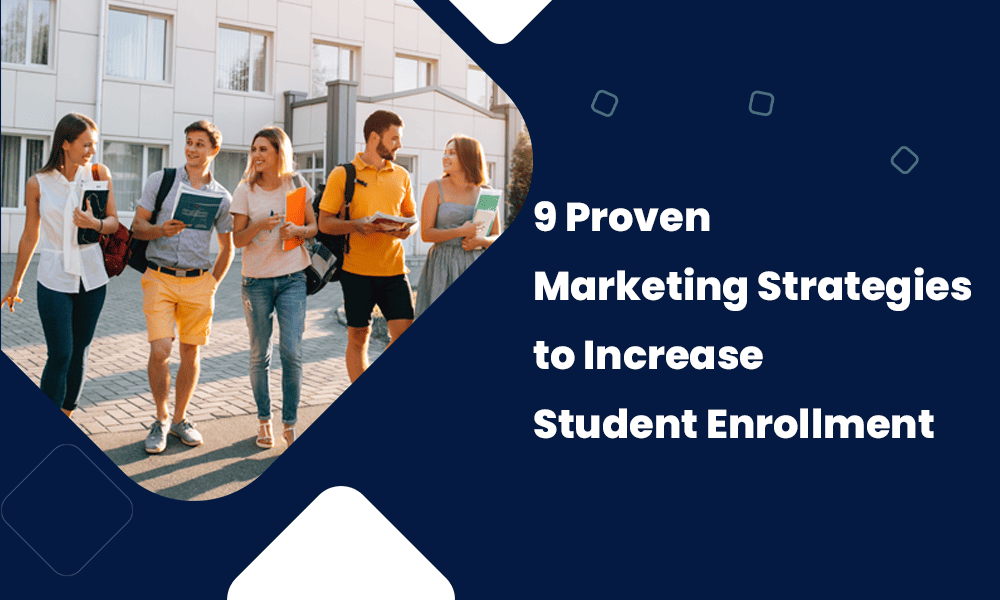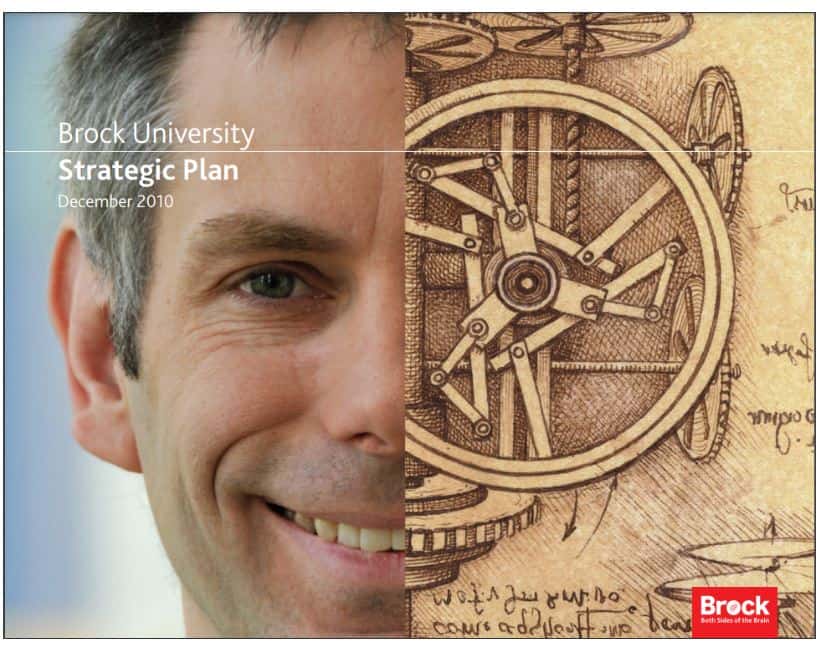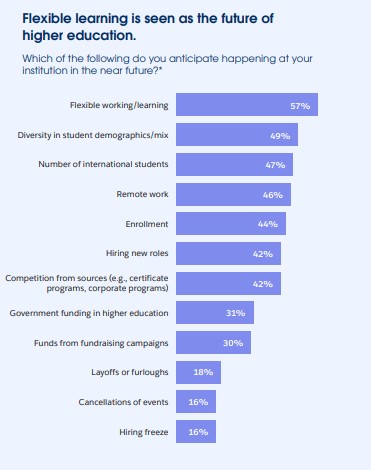Well-defined marketing strategies to increase student enrollment are vital to compete with other universities and attract prospective students. According to Statista, enrollment increased consistently from the latter part of the twentieth century. The trend is mostly unchanged except for a brief decline during the COVID-19 years.
Even while there isn’t a silver bullet for increasing enrollment, there are marketing strategies that each educational institution can use to ensure it meets its goals. Creating successful marketing strategies to increase student enrollment requires you to make the most of every available resource.
Our society is saturated with marketing materials, making it more difficult than ever to get your message through to the right prospects. To help you out, in this blog post, we cover nine proven marketing strategies that can help you deliver the right message to the right prospects and increase student enrollment.
Table of Contents
But First, Determine the Unique Traits of Your School
Every educational institution has its own unique traits. If you’re leveraging marketing strategies to increase student enrollment, you must work towards enhancing your institution’s brand image and reputation.
Some questions you ask to figure out your institution’s unique characteristics are:
- What does the school excel at?
- What do you love about your institution the most?
- What’s the best part about being enrolled in the school?
- What do students love about the school?
- How do professors make the educational course special at your school?
- What’s the input from staff and administrators?
How do you get the above information?
- Survey all the institutional players for honest answers
- Manage online reviews and feedback
- Note down the strengths that you may maximize for reputation management and branding
If you can convince students that they’d love to be on campus, you can attract students from farther locations. Use things you can market to flaunt your school’s campus life that bring value to the students.
9 Insightful Marketing Strategies to Increase Student Enrollment
Creating a marketing strategy for higher educational institutions involves various elements. We’ve outlined nine digital marketing ideas you can incorporate for maximum return on investment (ROI) on marketing strategies to increase student enrollment.
#1. Optimize your website to convert direct and organic traffic
Research shows that the website is the most powerful platform for students (64%) to learn about a school. Higher educational institutions must optimize their websites for two reasons:
- Ranking high on search engines
- Delivering optimum user experience
So, it’s essential that you do the following.
Optimize for search engines with SEO
The search engine is the most effective source of organic website traffic. Data shows that fewer than 1% of people check the results on the second page of search results.
If you want any part of traffic driven by search engines on your website, it must rank higher on the results page. You can do that with a search engine optimization (SEO) strategy, which may include several elements, such as:
- Targeting niche keywords
- Creating content to satisfy user intent
- Including meta tags
- Optimizing content structure for more readability
- Image optimization
- Internal and external linking
And the list goes on.
A fundamental SEO best practice for college websites is ensuring Google can index your site. You may save a ton of time troubleshooting by ensuring search engines index your site’s main pages. You may verify that your website is crawlable and indexable using SEO tools like Semrush or Ahref.
Make websites mobile-friendly
Going mobile is an integral part of optimizing your institutional website. The younger generations prefer using their phones rather than desktop computers to access the internet. Data suggest that 55% of all website traffic originates from mobile devices.
A website that works on many devices is a great opportunity for educational institutions to communicate with potential students from anywhere. Developing a responsive website ensures users’ experience that’s optimized regardless of their:
- The device’s size
- Operating system
- Orientation
Use long-tail keywords to rank for specific queries
Long-tail keywords can be highly effective in reaching a specific demographic. Long-tail keywords are commonly searched phrases or sentences with low keyword competition. For instance, “Top environmental science programs in south California.” You may create blog posts with long-tail keywords or sprinkle them on departmental pages.
Students who search with longtail keywords have high intent. You can attract some of the most motivated students seeking a place to study if you optimize your site to rank on top for these keywords.
Example of a website with organic traffic:
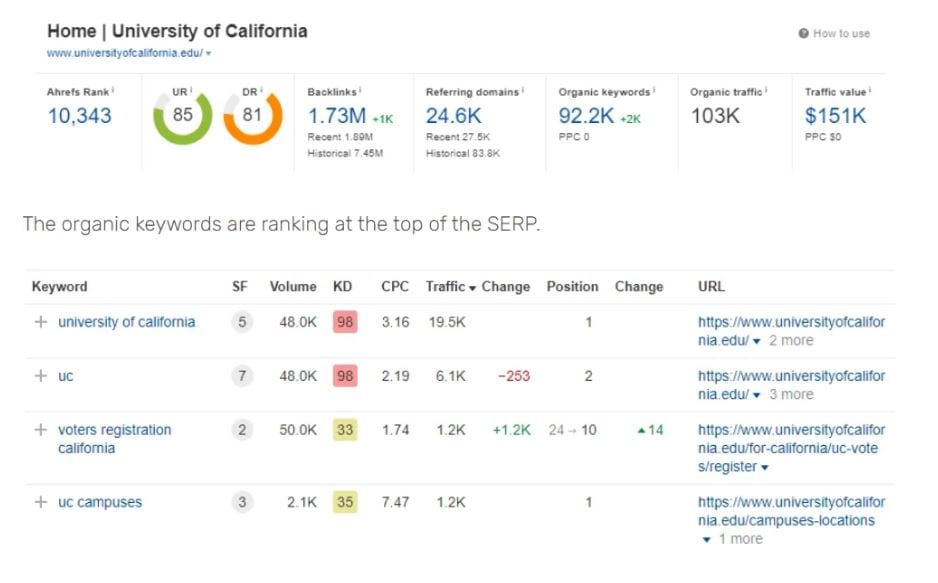
#2. Create a content marketing strategy to build awareness
Content marketing stands out among the many effective online marketing tactics available to colleges and universities for three reasons:
- It helps your website to rank higher in search results. Therefore, more potential students will be able to find your school
- You may use it to develop a good brand image and reputation for your university
- Potential students need resources to learn about many facets of higher education to decide which university to choose
Different types of content to create
A content marketing strategy should include different platforms and formats of content, such as the following.
- A branded blog: Helps with SEO and brand awareness
- Social media content: Builds a community of potential, current, and past students
- eBooks and guides: Showcases university expertise and share insights from collected data
- Virtual tours: Offers immersive content for more engagement
- Case studies: Lets you highlight success stories with relevant real-life examples
Example:
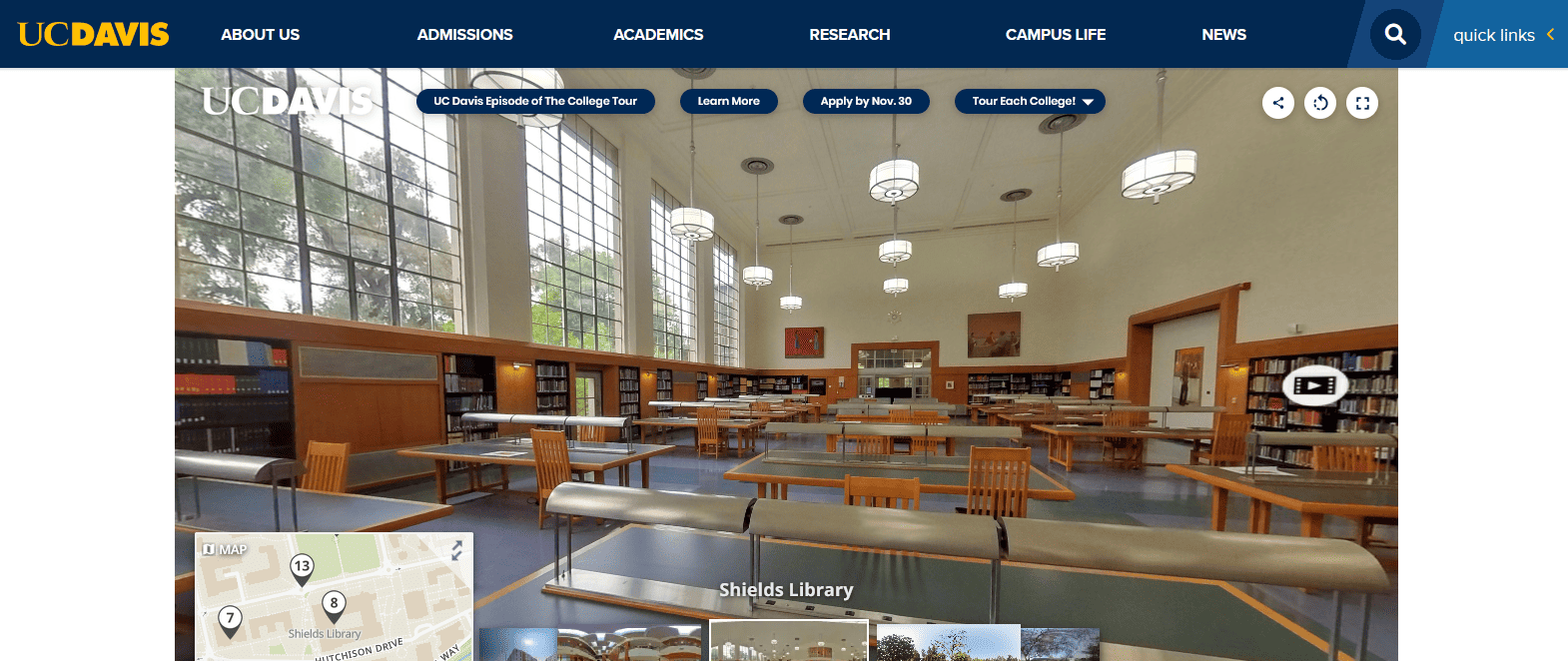
Personalize call-to-action (CTA) in all your content to drive action
Content will build awareness, but you also want your audience to take action every time they interact with your content. This action doesn’t necessarily have to be enrolling for a program; it can simply direct them to:
- Follow you on social media
- Arrange a call with your admin office
- Subscribe to newsletter
- Take a virtual tour
- Keep up with your blog and more
Placing personalized call-to-action (CTA) with every type of content can help you convert your leads or gain important information. This information can help you guide prospects through your marketing funnel for conversion.
Example: Miami Herbert Business School employs targeted CTA using web pop-ups to get potential students to schedule phone interviews with an admissions counselor. These pop-ups appear to only those who’ve taken certain actions to indicate a serious interest in the university’s program.
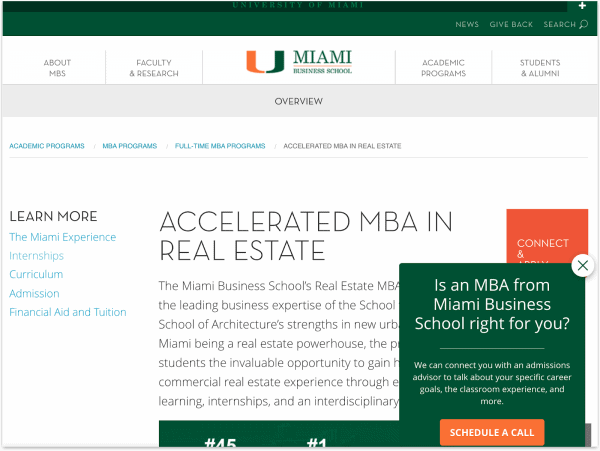
#3. Take on video marketing for effective storytelling
One way for higher education institutions to emotionally engage with their prospective students is through storytelling. This is why 86% of educational institutions have a YouTube channel. They’re leveraging the power of video content as a storytelling medium to connect with their audience and increase conversions.
Telling a compelling story through video may motivate your target audience to take action and leave a lasting impression on your school.
Video content offers two major benefits:
- Repurpose content for easy content generation: Easily video-fy lessons, presentations, and blog content to videos. Cut down long videos like webinars, interviews, and live lectures and use them over different marketing channels.
- Higher ROI: Eighty-seven percent of marketers believe that video directly affects sales, and 92% of video marketers claim that video provides a favorable return on investment.
Share campus videos on various platforms
You can make a splash among Gen Z prospects with shareable short-form videos capturing the best of college life in 30 seconds. Share it on popular video-sharing social media channels like:
- TikTok
- YouTube
- Snapchat
Combine video with other marketing tools
Video marketing tools can help you incorporate videos in your emails or SMS messages with a few clicks.
A short video in your email might be an excellent method to revive interactions with dormant subscribers. Studies show that compared to plain-text emails, those including video have a 96% higher click-through rate (CTR).
Read also: The Tricks of Trade Marketing: 7 Strategies That Work
#4. Boost your email marketing campaigns
When asked how they would want colleges and universities to contact them, 76% of high school seniors said email. Therefore, email marketing is a great way to tailor marketing strategies to increase student enrollment.
To make the most of email marketing campaigns, avoid common mistakes like:
- Not segmenting the target audience
- Sending generalized communications
Adding a little personalization, such as mentioning the recipient’s name in the subject line, can boost your open rates by 50%. Therefore, email personalization is the key to success in email marketing.
An intelligent higher education CRM platform can let you segment prospects based on data like:
- Study areas of interest
- In-state vs. out-of-state status
- Query types
- Stage of application and more
Don’t miss out on follow-up emails
With the help of email automation, your institution may send hyper-personalized email messages at various points in the recruiting and application processes. It can help you stay in constant touch with every prospect throughout their enrollment journey.
For example, you may send follow-ups on:
- What to do next based on their application activities
- How to prepare for the academic year
- What documents do they need to collect and send
- Where to find resources about a specific query
#5. Leverage digital ad campaigns to amp up lead generation
In 2019, colleges and universities spent $429 to $623 on marketing for each enrolled student. The issue of whether or not colleges and universities should engage in advertising in higher education has given way to a more pressing matter: Which digital ad strategies would most effectively assist them in reaching their goals?
The two most common places to present ads are on:
- Social media
- Search engines
You can even put money into paid listings on degree aggregator sites like Poets and Quants.
Your first step should be defining your target audience for each platform
You can’t have a successful marketing campaign without identifying your target demographic. However, the ad platforms you choose will determine how you target your prospects.
- Social media ads: You may target certain demographic and psychographic traits, such as:
-
- Location
- Hobbies
- Relationships
- Behavior
Example: This Facebook ad for a beauty school only shows up to female prospects interested in esthetics and don’t have a college degree:
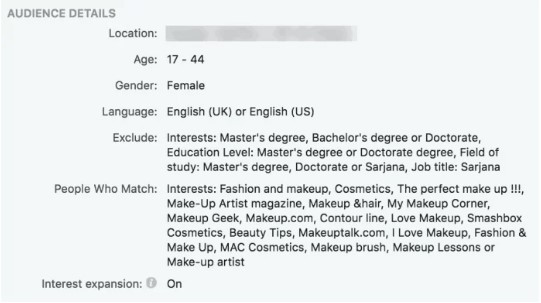
2) Search engine ads: You may provide some demographic targeting, such as:
- Gender
- Age
- Device type
However, these ads mostly depend on the search terms prospects use. Therefore, you must focus on search phrases used by people in your target demographic.
Measuring ROI of paid advertising campaigns
You can’t measure what you don’t define. Thus, it’s important to establish quantifiable objectives when developing a paid advertising campaign.
- For marketing strategies to increase student enrollment, your ad campaigns may aim to:
- Increase brand awareness
- Get students to show more interest (measured with inquiries, applications, and visits)
- Receive more deposits
- Select the right metrics and set benchmarks to measure data of ad campaigns, such as:
- Click-through-rates
- Cost-per-click
- Conversion rates
- Use the right tools for reporting and data visualization, such as:
- Google Analytics
- Tableau
- Google Data Studio
Remember that your return on investment (ROI) is more than your paid advertising expenditure; it reflects your entire marketing strategy.
Read also: 12 Examples of Email Marketing Strategies That Work
#6. Use retargeting & remarketing ad campaigns to stay top-of-mind
What can you do when you set up ad campaigns and get visitors who don’t take desired actions on your landing page? Collect those leads for a retargeting ad campaign.
Yes, retargeting ads can add to the overall cost of advertising. However, they may improve the quality of your return on investment (ROI) if you focus on the audience that shows the qualities of active degree seekers.
Retargeting campaigns help the brand and its messaging stay in these prospects’ minds. Run personalized retargeting ad campaigns from your CRM on various platforms, such as:
- Social media platforms
- Search engines
- Content websites
- Emails
These efforts should lead the segmented audience back to the landing page. Therefore, your landing pages must be laser-focused on lead capture.
#7. Invest in community engagement and outreach programs
Higher education equips individuals to address complex issues about the economy, social norms, and human impact on the environment. Given the premise, there may be far-reaching advantages to using community participation in marketing on college campuses. It improves not only the learning experiences of current students but also:
- Gains interest of prospects sharing similar values
- Increases information exchange
- Opens doors to profitable collaborations
Australian Universities Community Engagement Alliance reports that a strong economic and social future depends on universities that engage communities. They are an important source of knowledge that advances national concerns and agendas.
Colleges and universities may connect with the community in various ways, from light outreach efforts to more substantial initiatives, such as:
- Building strategic partnerships with schools and community organizations: To comprehend the impact of Urban Heat Islands on communities, the Ipswich City Council and Griffith University engaged the community in collaboration with the University of the Sunshine Coast.
- Hosting events and informational sessions: As a part of the same event mentioned above, Ipswich participated in a VR experience. They recorded their everyday temperature readings so that urban planning initiatives consider their opinions to reduce the heat island effect.
- Relying on staff, current students, and alums to narrate success stories: In honor of its 75th anniversary, the Australian National University (ANU) collected and shared entries on a community engagement website from:
- Faculty
- Students
- Graduates
- Supporters
- Other community members
By compiling an accessible digital archive of anecdotes about people’s interactions with ANU, they did their part to honor the university’s past while preserving its present.
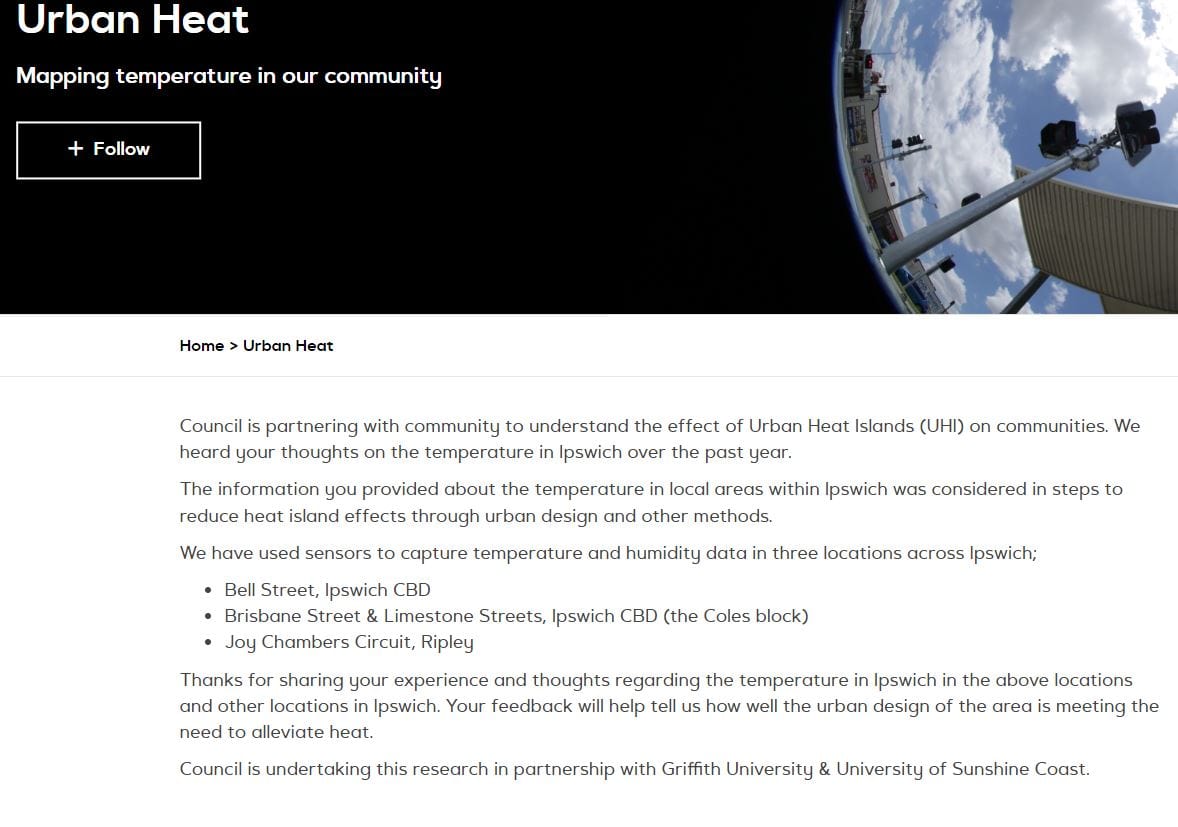
#8. Optimizing marketing strategies with data
There is more strategy than luck involved in marketing strategies to increase student enrollment. The educational enrollment agency RNL’s recruiting cost report for undergraduate students states that the average cost of attracting a student in 2018 was $2,357. The number continues to rise with each unsuccessful marketing choice.
To get the most out of your marketing efforts, you must get data to:
- Choose the most successful marketing channels
- Identify and locate your potential students
- Personalize content and deliver it effectively
This can help you keep your recruiting efforts efficient, ensuring tuition income at a cost-effective rate.
Unify data with a CRM system
To maximize the effectiveness of your recruiters and successfully turn prospects into students, you need to consolidate all the data you need into one location. Use a higher education CRM that allows you to visualize your student enrollment performance across all marketing channels in real-time.
Track key performance indicators (KPIs) for student recruitment
The sheer volume of data you can monitor could be overwhelming. Figure out what metrics and KPIs measure success. Don’t think of Facebook likes as success determinants. Prioritize indicators, such as enrollment and conversion rates.
Analyze campaign data to refine your marketing strategies
You must identify your most effective traffic sources to scale up successful digital marketing initiatives and eliminate unsuccessful ones.
Keep up with trends and changing market needs
Make your marketing strategies more relevant to local audiences by tailoring content to:
- Local interests
- Upcoming events
- Changing trends
You may use Google Trends to see how other university websites do in terms of organic traffic and enrollment. It provides access to a subset of real Google search queries that have been mostly left unfiltered.
Through this, Google can demonstrate global or regional interest in a certain subject. Determine which keywords are popular in your chosen area and utilize them in your marketing campaigns.
Read also: 12 Creative Small Business Marketing Ideas That Work
#9. Go where the Gen Z is
Unlike all previous generations, Gen Z prospects grew up with computers and the internet. They entered a world where social media and technology are second nature.
Research shows GenZ are on their way to being the most educated generation. More than 57% of Gen Z enroll in higher education. They are more involved in various academic pursuits. Therefore, as a marketer for higher education, you must learn about Gen Z’s way. Here are some of the best and trending tools for marketing higher education when targeting members of Gen Z.
Podcasts
Podcasts are increasingly popular amongst younger demographics. People between 18 and 44 make up 67% of podcast listeners. Therefore, it can be an excellent marketing tactic to boost student enrollment. You may:
- Run a podcast hosted by current students
- Interview alums regarding their college experiences
- Bring department experts to share knowledge and trends on various topics
Live streaming
With up to three times the engagement of on-demand video, live-streaming is a fantastic option to test out in your overall video marketing strategy. Your school may decide to broadcast important events live, such as:
- Forthcoming athletic events
- Commencement ceremonies
- Open houses
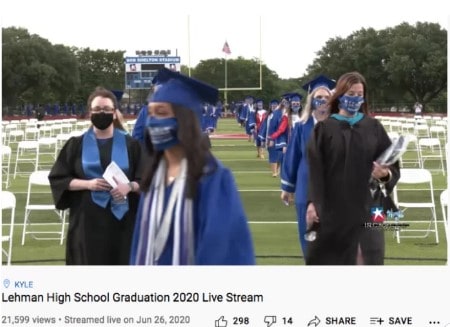
Augmented and Virtual Reality
Ignoring making augmented reality (AR) and virtual reality (VR) content would be a mistake. You may demonstrate to your audience that you are innovative and up-to-date with digital trends using the most recent technology. You may use VR for:
- 360-degree campus tour on Google
- Induction
- Immersive study-abroad experiences
- Live events
- Tutor meets
Viral and experimental marketing
To illustrate their “Both Sides of the Brain” initiative, Brock University had students cover half their faces with a photo demonstrating their ambitions. Following the campaign, the university’s visibility soared from 35% in 2008 to 78% in 2009 and 78% in 2010.
Such experimental marketing can make lasting impressions and create memorable experiences by going viral.
Chatbots
One of the best ways schools can attract more Gen Z students is to include chatbots on their websites. Why? Chatbots may answer basic inquiries and move applicants along in the application process. They cut down on waiting time to interact with someone. Students may obtain instantaneous responses to their questions with the aid of chatbots.
Chatbots driven by artificial intelligence helped:
- Georgia State University to enhance its graduation rates by 23%
- Bethel University to boost retention rates by 4%
Read also: 16 Powerful Retention Strategies to Stop Churn
What Do Students Consider While Choosing a University or College?
Now, you have a list of top marketing strategies to increase student enrollment. However, when planning what to market, you must consider what students look for in their higher education institutions. We looked at the Connected Student report by Salesforce, which reveals what students want from a university or college.
Educational excellence
We all know most students’ goal is to get into Ivy League schools. Why? Because they have recognition for educational excellence. Prospective students desire assurance that the school they choose has strong academic programs. However, many students don’t even apply because they aren’t sure if they’ll get in.
If your college or university has an exceptional education program, you must use it. You may promote:
- Your rankings
- Qualifications of your professors
- Contributions and affiliations with other institutions and more
Students looking to enroll in college or university will be interested in hearing about your college admissions advisory services, so promote them.
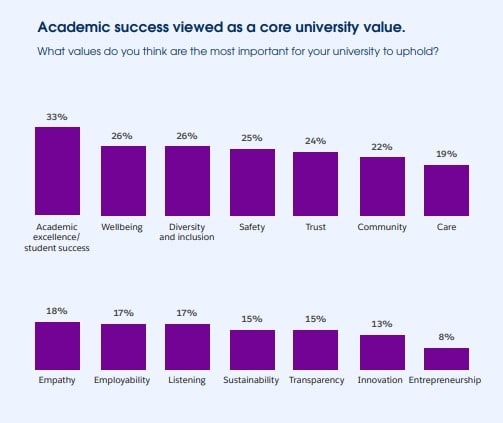
Student life on campus
While quality education is an obvious deciding factor for prospective students, you’d be surprised that it is not the top reason. Salesforce shows that 56% of students cited location as a key consideration when choosing where to enroll.
While you can’t change your educational institute’s location, understand why it matters so much.
- Students want a university/college in their town or close to home – this means they want to feel at home
- They care about their social life and college activities
- They want to feel like they belong and have a great college experience
Location alone will never capture the essence of a university experience. Students must have a sense of belonging with:
- The school
- Its teachers
- Their classmates
When students arrive at college with a sense of belonging, they are three times more likely to have a fantastic experience. This highlights the importance of laying a foundation of belonging for students through marketing.
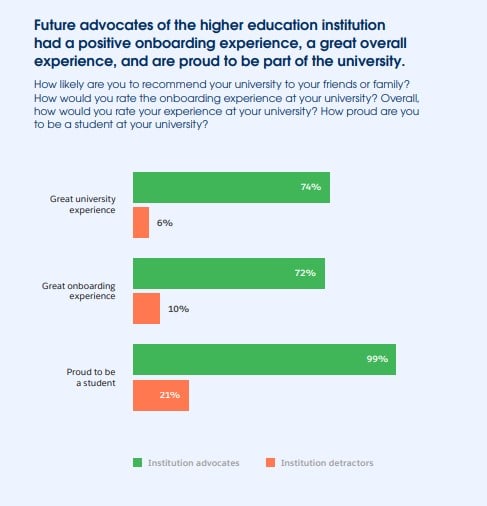
Career advancement
Salesforce reports that 47% of students choose a college based on career advancement opportunities. About 49% of current students also plan to continue their education after graduating.
Students might have a better overall experience if they know how their degree will pay off once they graduate. Higher education institutions may be effective change agents in helping lifelong learners develop their abilities and take on new economic challenges. You may market this aspect of your educational institution if you:
- Connect students to career mentors or alums for career advice
- Include career services or a career center
- Have strategic partnerships with organizations to offer attractive internships and job opportunities
For example, Pompeu Fabra University assigns students an alum mentor. It informs onboarded students of the career assistance possibilities during orientation. The institution moved away from using mentors in the middle of their careers to mentors close to the student’s age.
Student resources
It’s important to start strong, but prospective students also care about how colleges and universities help them to finish strong. Students want ongoing assistance from their institution as they go through their academic careers to thrive and join the workforce.
In addition to career development services, students seek resources for a personalized experience:
- 40% of students desired more assistance with time management to succeed academically
- 34% wanted more resources to explore potential career paths
- 36% of students seek well-being resources
- 54% want resources to connect with peers
Most students nowadays are more demanding in their requests for improved experiences than in previous years. So, if your educational institution allocates resources under the below categories, they make a great selling point. You must accommodate them in your marketing strategies to increase student enrollment.
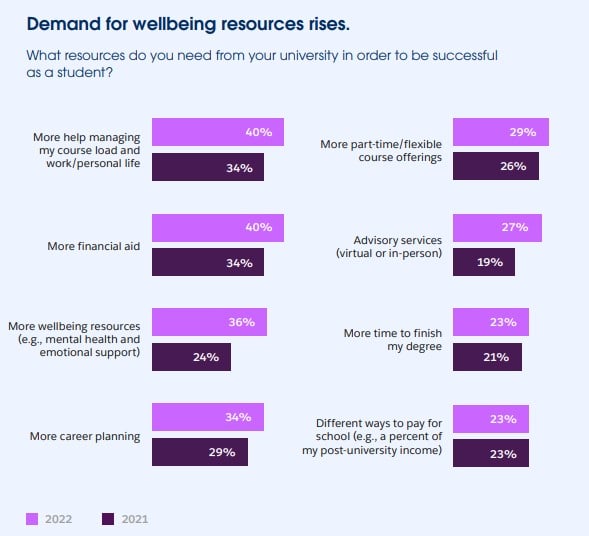
Flexible learning modules
Since the COVID-19 pandemic began, students and teachers have depended on flexible learning modules. Students demand personalized focus and greater leeway to choose how they study, whether virtual, online, or in-person.
The desire for flexible learning will be around for a while, as 57% of institutional staff expect it to grow.
You can market flexibility in learning if you offer:
- Easily accessible resources and information
- Mobile services
- Collaboration over online sharing platforms
- Personalization of learning experiences based on student needs
Flexible learning options reach students beyond the physical border. You may attract a diverse set of students who would not have been able to attend your excellent school otherwise. Emphasize your commitment to accommodating students’ needs for:
- Flexible scheduling
- Any-location friendly learning course
- Other factors
Values that your institution stands for
Every educational institution adheres to its code of conduct and fundamental values. Some emphasize the power of knowledge; some show a deep respect for social equality.
Knowledge and educational excellence are the most powerful values that every higher education institution should prioritize. 32% of students expected their future educational institution to prioritize academic performance. However, some other values that students care about include:
- Student’s wellness and safety
- Diversity and inclusion
- Trust and community
- Empathy and care
- Employability and more
Educational institutions are taking notable steps towards incorporating the values that prospective students care for. 17% of the institutions Salesforce surveyed plan on recruiting a chief diversity officer or someone with similar responsibilities to prioritize diversity and inclusion on campus.
Use your marketing strategies to promote what your school stands for. Your school will increase student enrollment from like-minded prospects who believe in your purpose.
Note: You must show how your institution enforces its values in your community. You may include examples of your values in practice through various activities and events.
Read also: A Guide to Higher Education Marketing Strategies
Conclusion
Every college and university is putting money into marketing. However, the enrollment numbers are stagnant. Given the increasing competition in a stalled market, your marketing strategies to increase student enrollment must be creative and backed with data. In this article, we’ve explored nine creative marketing ideas for higher institutions.
However, there’s no one-size-fits-all marketing plan. The success of your marketing efforts depends on how you mix these ideas to tailor your strategy to cater to the demands of your target audience and show off your unique selling points.
An open mind and a dedication to constant improvement are essential on the never-ending marketing road to increase student enrollment. To succeed in the long run, your organization must embrace innovation, refine its strategy, and highlight its defining principles.
FAQ
How can I increase my student enrollment?
Increasing student enrollment is a multifaceted challenge that requires a comprehensive approach. Here are several ideas to consider including in marketing strategies to increase student enrollment:
- Website optimization
- Content marketing
- Video marketing
- Email marketing
- Paid ads
- Retargeting
- Using chatbots
- Hosting podcasts
- Viral and Experimental Marketing
- Community engagement and outreach programs
- Data and analytics
What techniques can make your school enrollment marketing plan more effective?
To make your school enrollment marketing plan more effective:
- Focus on your USPs
- Segment target audience to deliver personalized content
- Leverage data analytics for tracking
Continuously adapt your strategies based on data reports and performance metrics to maximize enrollment success.
What is enrollment marketing?
Enrollment marketing is a strategy educational organizations like schools, colleges, and universities use to recruit and enroll students efficiently. It includes a variety of marketing and communication methods aimed at highlighting the institution’s strengths, programs, and services to potential students.
